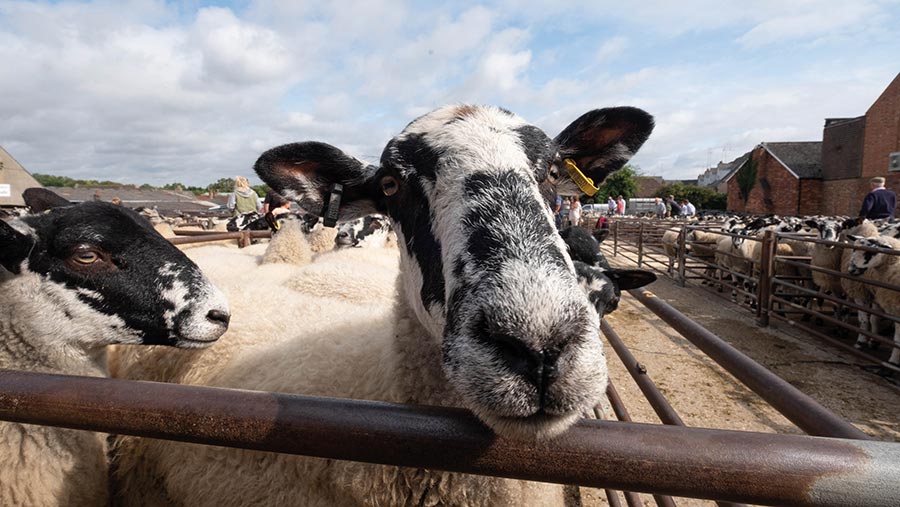Six-step guide to help sheep farmers cut parasite risk
 © Tim Scrivener
© Tim Scrivener A quarantine guide to help sheep farmers assess the potential risks to consider when bringing animals into a flock has been produced by the Sustainable Control of Parasites in Sheep (Scops) group.
The six-step guide provides clear advice on assessing the risk of roundworms, sheep scab and liver fluke, finding information on the tests and treatments available, and best practice to follow. It also offers calendar-based examples of a range of low- and high-risk scenarios and a blank calendar that can be customised for individual farms.
Vulnerable time for flocks
“It’s a very busy time, with lots of sheep moving up and down the country,” said Gloucestershire sheep farmer and Scops chairman Kevin Harrison at the launch of the guide.
“[Control of parasites] is an issue year-round, but buying in stock is one of the most concerning times and can have the most negative effect on a flock,” he said, adding that even one sheep brought onto a farm could be “a bag of worms or a skinful of parasites”.
The Scops principles
- Always ensure any treatment you give is fully effective
- Try to reduce your reliance on anthelmintics using management options and monitoring, where possible
- Avoid bringing in resistant worms and/or other parasites by following a robust quarantine routine
- Minimise the selection for worms that are resistant to anthelmintics when you treat sheep
Quarantine protocols
Quarantine is so complex, it has reached the stage where sheep farmers need to work with vets and advisers, argued independent sheep consultant Lesley Stubbings.
“Many of the disease threats are not visible, so protection relies on a combination of treatments and testing,” she said. “However, there are so many different parasites to consider that an effective quarantine protocol can look complex and off-putting.
“Too simple an approach is ineffective. With help from their vet or adviser, sheep farmers can put a workable, effective plan [in place] that will safeguard their flocks from the threats incoming sheep pose.”
Quarantine advice, calendar examples and a blank calendar are available on the Scops website.
Six steps
The six steps for roundworms, sheep scab and liver fluke quarantine and treatment are:
1. Day 0: Assess risk at purchase
- Assume all animals are carrying resistant roundworm infections
- Assess sheep scab risk as high* or low**
- Assess liver fluke risk
2. Day 0-2: Treat when sheep arrive on farm
- Treat for resistant roundworms
- Isolate and test for sheep scab, or treat immediately, according to risk level
- Assume liver fluke are triclabendazole-resistant and treat sheep with different product if assessed as high risk
3. Day 2-28: Isolate
- Keep all incoming sheep isolated from the rest of the flock
- Turn out separately onto pastures grazed previously by resident flock (where available) for three to four weeks (days 3-28)
4. Day 7-21: Test
- Test anthelmintics have worked by taking faecal egg counts after 14 days
- Test for exposure to sheep scab mites (using Elisa test) 14 days after sheep arrive on farm and treat if Elisa test is positive
- Take faecal egg counts for liver fluke or administer copro-antigen test 21 days after treatment (if given)
5. Post-day 21-28: Rejoin the flock
- Sheep can join the home flock
6. Day 35-43: Treat again
- Repeat treatment if liver fluke risk identified
*High risk: Untreated animals from a farm with a known risk – for example, common grazing or from a farm or market in a hotspot area. If in doubt, choose this category
**Low risk: Sheep from a vendor who states they have been treated or they have not come into contact with other sheep while grazing
